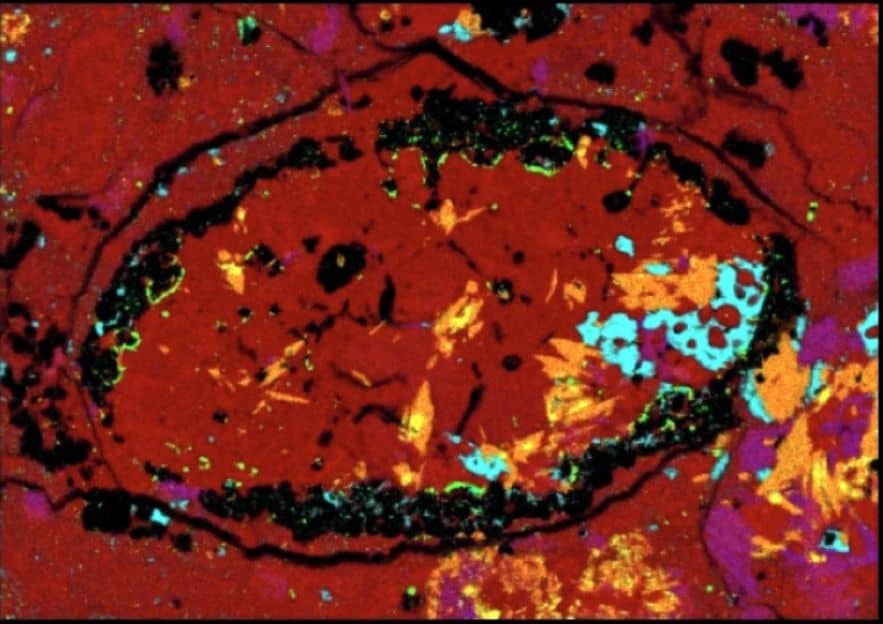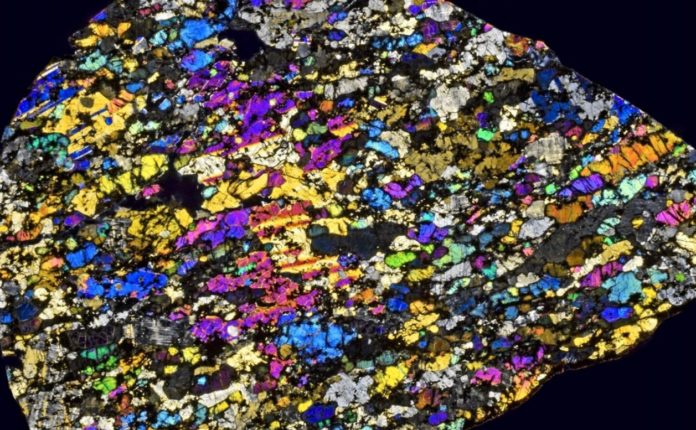Tremolite crystals found in the fragments of the asteroid 2008 TC3 could have formed only on a sufficiently massive celestial body – possibly a dwarf planet that existed in the young solar system.
On October 6, 2008, ground-based telescopes noticed the approach of a small (two to five meters across) asteroid, and the next day it fell in northern Sudan. Thus, 2008 TC3 was the first (out of three so far) cases when a meteorite fall was predicted in advance. After entering the atmosphere, it collapsed, but local residents and scientists managed to collect hundreds of small fragments with a total weight of just over 10 kilograms.
The study of the samples continues to this day, and recently experts showed that 2008 TC3 was formed from a massive and as yet unknown body that existed in the early solar system and had dimensions comparable to at least the dwarf planet Ceres. A group led by a professor at the Department of Space Studies, Southwest Research Institute, Victoria Hamilton writes about this in an article published in the journal Nature Astronomy.

- Does This Mean We Stopped Being Animal and Started Being Human Due to ‘Copy Paste’ Errors?
- The One Lifestyle Choice That Could Reduce Your Heart Disease Risk By More Than 22%
- Aging: This Is What Happens Inside Your Body Right After Exercise
- Immune-Boosting Drink that Mimics Fasting to Reduce Fat – Scientists ‘Were Surprised’ By New Findings
- Gun Violence in America: What They Don’t Talk About at the Debate
The authors examined a 50-milligram sample of AhS 202 by taking a polished section and examining it in infrared with a microscope and spectrometer. As a result, they discovered that the fragment contains tremolite, a calcium-magnesium silicate from the amphibole group.
Amphiboles form complex crystal lattices, and their appearance requires rather high temperatures and pressures.
“Essentially, this mineral forms under conditions that these meteorites were not previously known to have experienced,” adds Hamilton.
According to scientists’ calculations, the mother body, in which the amphiboles could form, should have had a diameter of 640 to 1800 kilometers, which puts it in the category of dwarf planets like Pluto (2400 kilometers) or Ceres, the largest body in the asteroid belt (950 kilometers across). Earlier, French scientists who studied fragments of 2008 TC3 came to similar conclusions.
Today, the mother celestial body, obviously, has not survived: an object of this size would not have escaped modern telescopes. Nevertheless, as the find showed, there should have been much more such objects in the young solar system than was thought, and they could play a significant role in the evolution of our star home.
